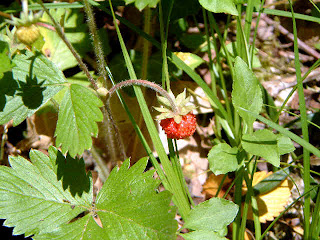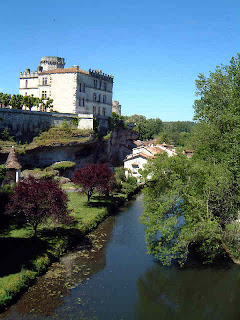Today we have travelled further afield, to Espuña about 30 miles away. We have our Dutch friend Jan to thank for this expedition as he organises and leads most of our walks, having meticulously researched them beforehand. But first, coffee at Santa Eulalia Monastery on the edge of the Park. Parts of the monastery have been converted into a hotel and restaurant, hence our coffee stop.

The monastery church, shown above, is unusual. Inside, the walls are completely covered with paintings depicting St Eulalia. The roof is supported by carved wooden beams from which a large wooden galleon is suspended. I couldn’t find out the significance of the ship. At the altar end there is an ornate image of St Eulalia that is carried all the way down to the nearby town of Totana in December each year to celebrate the Saint’s festival. Do right by your patron saint and your patron saint will look after you, i.e. keep the tourists coming. So it’s well worth their efforts: we have been guided here by divine intervention, Jan had nothing to do with it.

A beautiful view from the café terrace, and we can also see our destination, the flat top mountain on the left-hand side horizon. The summit is 1583m high, or 5,200 ft in old money. Underneath is a closer view of the mountain taken from the start of the walk. The top is occupied by the military, hence the dome and aerials, and that part is out of bounds.

Soon we come to an unusual conical building, of which there are several within a few hundred yards of each other. These are ice-houses, in use from the 17th to 19th centuries. Snow was gathered during the winter and compacted into ice in these structures where it was stored until needed. It was then cut into blocks and taken down by mule often at night to minimise melting, even so, as much as 50% of the ice was lost because of the length of the journey, a full working day, to get it down the mountain and then to the large towns. Only the wealthy, of course, could afford this luxury. The coming of electricity finished the industry.

Moufflon goats were introduced into the park from the Atlas Mountains in North Africa. These roam wild and have large horns. The photo doesn’t do justice to their impressive appearance but you can see the size of the herd. You can apparently eat moufflon meat at local restaurants, perhaps in the form of “Desperate Dan” style pies with these big horns poking through the crust.

The mountain flowers were in full bloom. Some of these plants were unfamiliar to us, for example “nun’s cushion” as shown in the photo below. All I can say is, if nuns sat on cushions as spiky as these, they must have had very watery eyes.

As you’d expect with the air being fairly clear, there were lovely views at many places during the walk: see example below. We followed the waymarked trail in a 10 mile circuit, gently downwards at first but with a killer final ascent in the hot late-afternoon. It was a grand day out, to borrow a phrase from Wallace & Grommit.










































